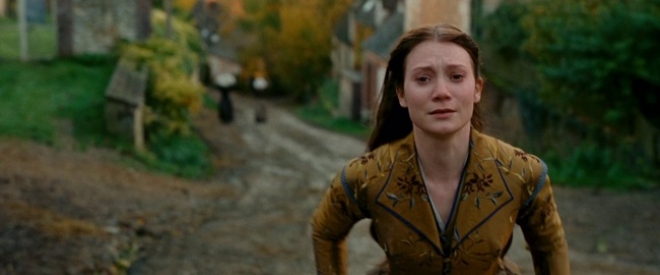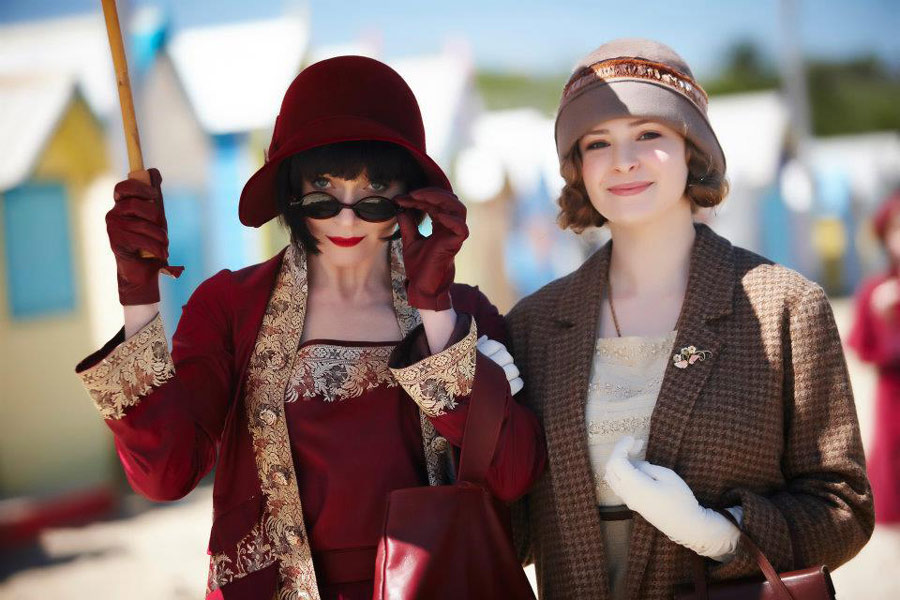BY: ANYA BAKER
This is not going to be about Jane Austen adaptations. There are already numerous whole blog posts about why the 2005 Pride and Prejudice adaptation is a stain on costuming history.
(I disagree, but only because director Joe Wright demanded more flattering waistlines than period-appropriate empire waists, and if I were in a movie I would want my costumes to look supremely flattering, too. Fight me, 1995 BBC adaptation purists!)
Like all institutions involved in history, the film industry has to wrangle with balancing a budget, the attention span and tastes of its audience, and the ideal of an authentic pseudo-historical experience. This ideal applies more to historic houses than to science centres and art galleries, but the yearning for a connection with the past is found in almost any institution. In a museum setting, the municipal government may grouse if you start slapping the wrong colour of paint on a historic house--if you are a costume designer and you cut the wrong corners during film production you might end up skewered in a national newspaper because you put a dress with a zipper on a 15th-century queen.
I'm not fussy when it comes to accuracy in costuming; mostly, because I sympathize with being too broke to spring for the real deal, and because people who are unused to being shaped by period corsetry and foundation garments do not tend to look authentic in them. Often, accurately representing an era or a look ends up being a lot more effective than accurately reproducing it. Making an audience feel like a costume has been born out of its environment is what convinces them that the experience of the film is authentic. Some movies make my heart go pit-a-pat with their costuming choices, and these three recent movies engage so successfully with historic storytelling through costuming that I need to share them:
The Dressmaker (2015)
| Image credit: Universal Pictures |
The character's role as a dressmaker, not a designer, is taken into account--her clothes therefore strongly, and expertly, reference the lead designers of the day. Key costume pieces clearly tie to a huge moment in fashion history: Christian Dior's New Look (plus the incredible fabrics made in the early part of the 20th century and and the glamorous colour palette of mid-century haute couture). Wilson mentions that securing real vintage for films is becoming difficult, because nobody fits in to pieces designed for average 1950s measurements. Even authentic-looking reproductions are difficult to create with modern fabrics. But the story of Kate Winslet's onscreen wardrobe, and its integration into the character's role as a dressmaker, is what creates the feeling of authenticity.
Costumes are displayed in a special exhibition.
Madame Bovary (2014)
 |
| Image credit: A Company Filmproduktiongesellschaft. |
Mia Wasikowski's character stands out in her environment, but it is the stifling provincial town that generates her creative interest in the beautiful clothing imaginable. As a respectable middle-class woman, creation is outside of her prescribed abilities, so she turns to the next best avenue: patronage of the arts. It is the sort of lifestyle decision often warned against in 19th-century novels, of the rising middle class trying too hard to take on the airs of the upper class with newfound wealth--or the promise of it, in investment schemes or credit. It's also very familiar to contemporary audiences, who recognize the yearning for something a little grander and chic than what everybody else is wearing.
Bright Star (2009)
 |
| Image credit: Pathé Renn Productions. |
In an interview with W Magazine, Patterson explains how costuming Abbie Cornish's seamstress character in the film exemplified the daring spirit of young women of any time period to experiment wildly with style. Cornish's costumes are sometimes a little weird, but they reflect a sense of reality in being so overtly curated. She may look a little out-of-place and overly done-up even by 19th-century standards, but so do contemporary fashion bloggers like the Man Repeller. To be on the cutting edge is to stand apart; it's a notion that transcends time periods and gives a sense of relatable authenticity to this Regency seamstress.
Miss Fisher's Murder Mysteries (2012-present)
 |
| Image credit: Every Cloud Productions. |
Boyce also incorporated 1920s sewing techniques into reproducing clothing: narrower rolls of cloth and a disuse of darts meant that clothing in the 1920s was often sewn from panels. Many costumes are outrageous and colourful, matching the personality of Davis' character; it is everything the audience expects from the Roaring Twenties, but also makes nods towards Boyce's research. The audience ends up delighting in how the maverick Miss Fisher manages to get away with wearing so many pantsuits.
Costumes are displayed in a special exhibition.
Costume designers who I love but did not get to write about: Sandy Powell, Jacqueline Durran (of 2005 Pride and Prejudice fame!), Eiko Ishioka, and Kate Hawley.


No comments:
Post a Comment
Note: only a member of this blog may post a comment.